When it comes to home entertainment, there are a lot of choices to make. Do you want a projector or an OLED TV? This article will compare and contrast these two types of TVs so that you can make the best decision for your needs. It will discuss common questions such as “What is the difference between a projector and an OLED TV?” and “Which one is better for watching movies?” By the end of this article, you should have all the information you need to choose the right type of TV for your home!
What is a Projector?
A projector is a device that takes an image or video and projects it onto a large surface, such as a wall or screen. Projectors are commonly used in business settings to show presentations and other visuals during meetings and conferences, but they can also be used for entertainment purposes, such as watching films at home or playing video games on a larger display.
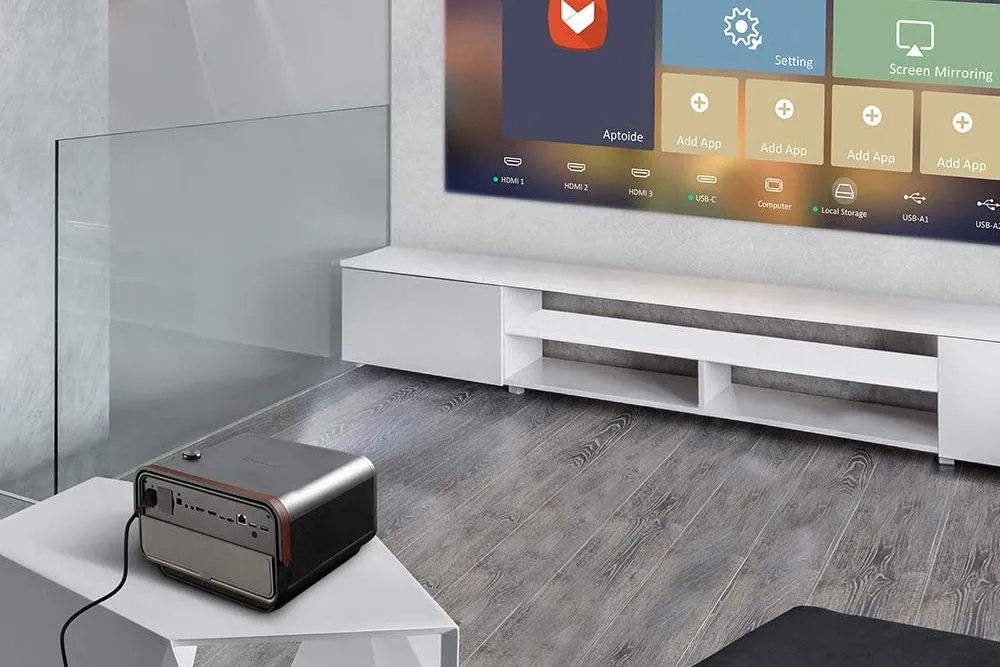
Projectors come in two main types: LCD (liquid crystal display) projectors, which use liquid crystals to create the image, and DLP (digital light processing) projectors, which use tiny mirrors to reflect light off of the screen. Both types of projectors have their own advantages and disadvantages; however, most people prefer LCD projectors because they produce higher resolution images and are typically cheaper.
When choosing a projector, it’s important to consider the size of the room where you plan to use it, as well as your budget. The brightness of the projector should also be taken into account; if you plan to use it in a brightly lit room, then you may need to choose one with a higher lumens rating. Additionally, some projectors come with features such as built-in speakers or network connectivity, so make sure to check what features you need before making your purchase.
Projectors can be used for both professional and personal purposes. They’re great for businesses that want to show presentations during meetings or conferences; they’re also perfect for at-home entertainment purposes, like watching movies or playing video games on a larger display. Investing in a good projector can make all the difference when it comes to enjoying your favorite films and other visuals [1].
How do Projectors Work?
Projectors work by taking an image or video signal from a source, such as a laptop, DVD player, or game console, and displaying it on a large wall or screen. The image is produced by either an LCD (liquid crystal display) projector or DLP (digital light processing) projector.
LCD projectors use liquid crystals to create an image; these crystals are arranged within tiny panels that can be opened and closed to produce different colors and shades of gray. As light passes through these panels, it is then projected onto a large surface, such as a wall or screen.
DLP projectors use tiny mirrors to reflect light off of the screen. These mirrors can be moved rapidly to create different shapes and colors on the display. The images are then projected onto the screen with a bright white light.
Projectors come in many sizes and specifications; for example, some projectors may have built-in speakers or network connectivity, while others may offer 3D capabilities or wireless streaming. The brightness of the projector should also be taken into consideration when making your purchase; higher lumens ratings generally produce brighter images and are better suited for brighter rooms.
What is an OLED TV?
An OLED (Organic Light Emitting Diode) TV is a type of flat panel display that uses organic compounds to produce light, instead of a backlight like traditional LCD TVs. The result is an incredibly thin and vibrant picture with excellent contrast, rich colors, and deep blacks. OLED TVs have become increasingly popular in recent years due to their superior picture quality and slim design.
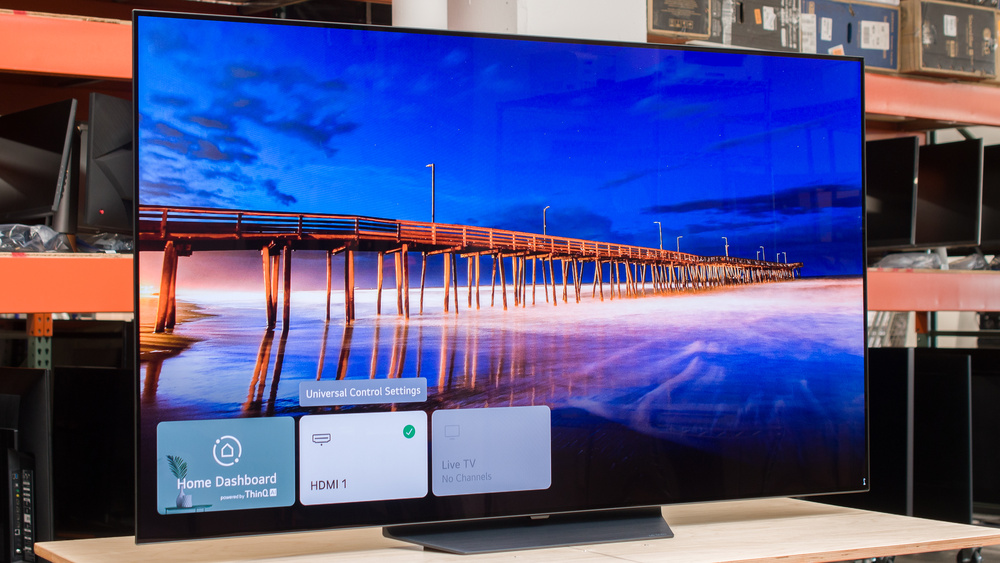
They are also more energy efficient than other types of televisions. With the newest advancements in technology, OLED TVs offer some of the best picture quality available on the market today.
Additionally, OLEDs have a wider range of colors making them ideal for HDR content.
OLED TVs are available in various sizes from small 32-inch models to large 88-inch screens. They also come with a variety of features such as smart capabilities and advanced picture settings, making them perfect for any home theater setup. With their slim design and superior picture quality, OLED TVs remain some of the best options on the market today for those looking to upgrade their viewing experience [2].
Points of Comparison of Projector and OLED TV
Screen Size
Projectors have a much larger capacity for screen size than OLED TVs. The projector’s image can be projected onto any wall, or ceiling or even be mounted on a tripod. Depending on the room, you may be able to fit up to 100-inch screens with projectors whereas OLED TVs generally come in sizes between 55 and 65 inches.
Picture Quality
OLED TVs are often seen as having better picture quality than projectors because they don’t suffer from blurring or ghosting issues that sometimes occur with projectors. Additionally, OLED TVs use self-illuminating pixels which produce incredibly deep black levels, rich color, and higher contrast ratios than what you would get from a projector.
Resolution
Projectors and OLED TVs both have very good resolutions. Projectors generally come in 1080p, 4K, and even 8K resolutions, while OLED TVs usually range from 1080p to 4K. Depending on the model of each device, you may be able to get similar levels of picture quality from either option.
Cost
OLED TVs are usually much more expensive than projectors due to their superior technology. An average projector will cost around $500 – $1500 whereas an average OLED TV can cost anywhere between $2,000-$4,000 or more.
Installation
Projectors require a bit more work for installation as they need to be mounted onto a ceiling or wall and then adjusted accordingly for optimal picture quality. OLED TVs on the other hand, are much easier to install as they are simply plugged into a wall and ready to use.
Brightness
Projectors typically have a much brighter display than OLED TVs. This is because projectors use lamps to produce images, while OLED TVs usually have a maximum brightness of 400-600 nits. The higher the nit rating, the brighter the image will be. Moreover, OLED TVs can suffer from image retention issues due to the static nature of their display.
Color Accuracy
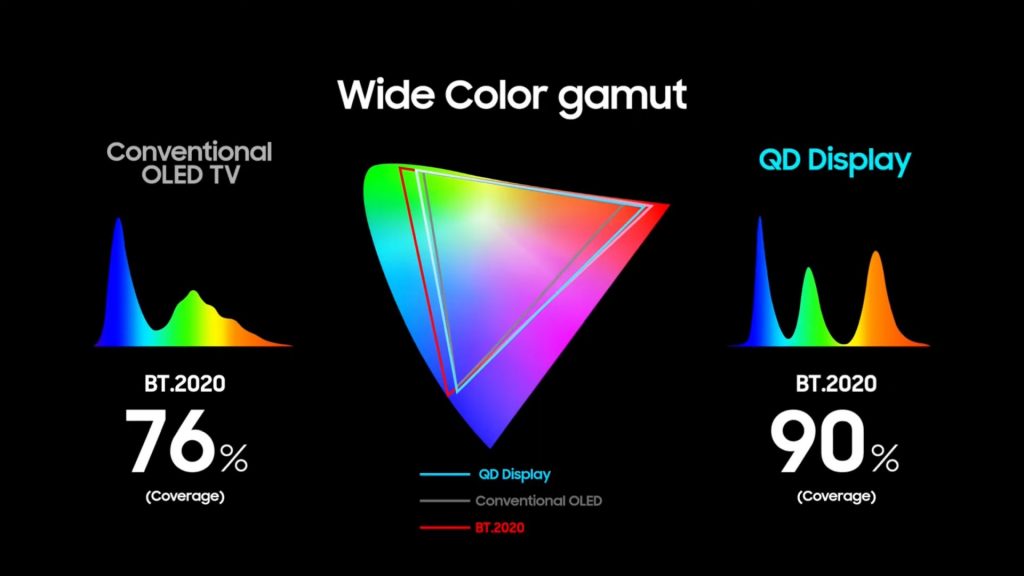
Projectors tend to have more accurate colors as they use a color wheel that helps in producing the correct tones. OLED TVs on the other hand, use LCD panels which can have some inaccuracies in terms of color representation.
Viewing Angle
Projectors usually have wider viewing angles than OLED TVs due to their reflective nature. You can view the projected image at any angle without losing clarity or detail, while with OLED TVs, you may experience a loss of contrast and visibility if you move too far away from the center point of view.
Technology
Projectors use lamps and LCD or DLP panels to create an image, while OLED TVs use organic light-emitting diodes (OLEDs), which are more energy efficient and thinner than traditional LCD technology.
Heat Output
Projectors tend to generate much more heat than OLED TVs as they require a lamp to produce the image. This can lead to overheating issues if not properly ventilated. OLED TVs on the other hand, don’t require any type of external power source and therefore generate less heat.
Screen Requirement
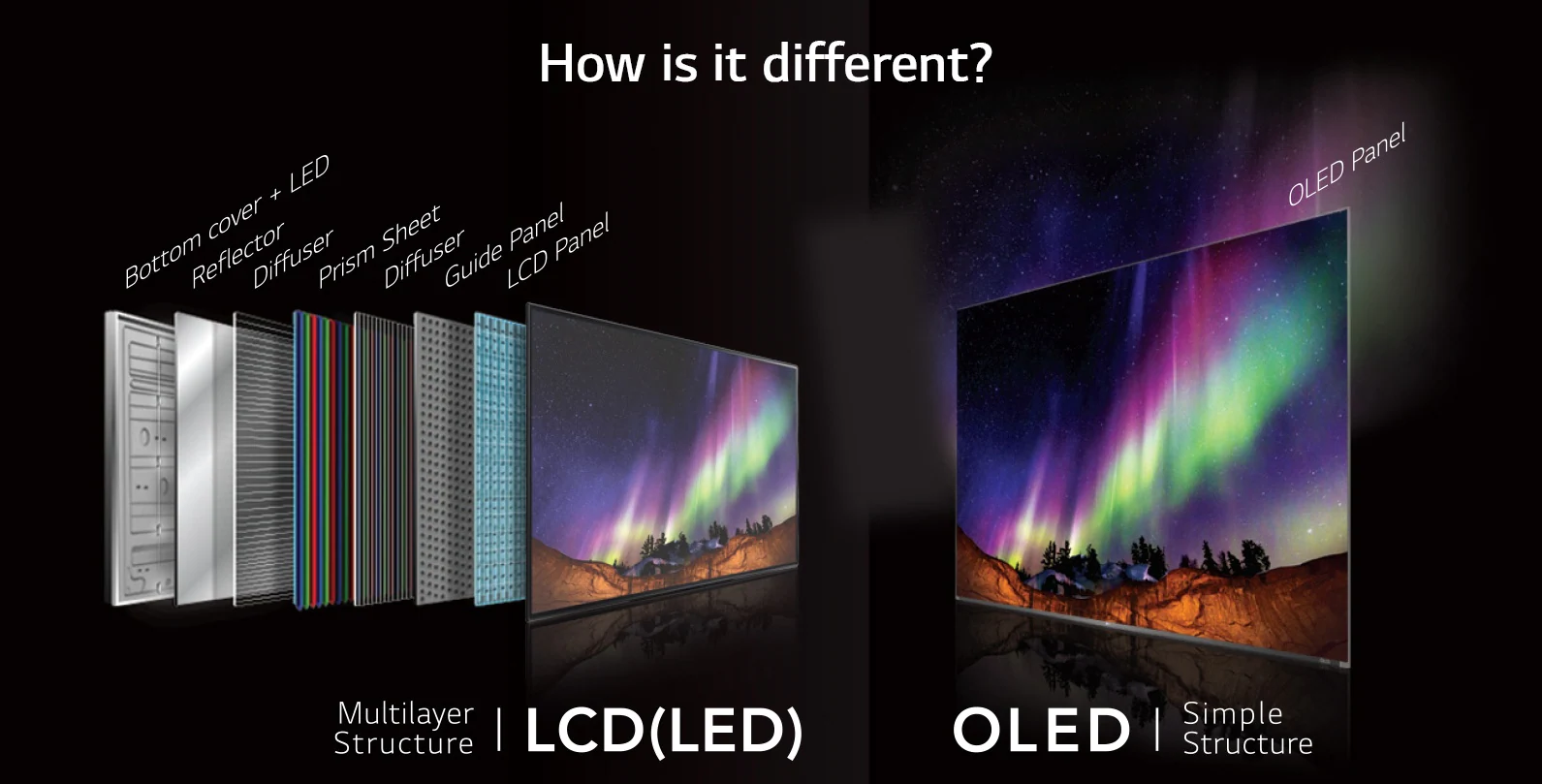
Projectors require a wall or ceiling to be mounted and adjusted correctly for the image quality to be optimal. OLED TVs can be placed anywhere as they are self-contained units. Additionally, projectors need to be in a certain range of the screen for optimal clarity, whereas OLED TVs don’t require such line-of-sight.
Portability
Projectors are much more portable than OLED TVs, as they can easily be packed up in a case and transported with ease. OLED TVs on the other hand, weigh significantly more due to their larger size and are not suitable for transporting [3].
Projector vs. OLED – Advantages and Disadvantages
Projector Pros and Cons
Projectors are an excellent choice for larger-scale viewing experiences. They can project a much larger image than traditional TVs and computer monitors, meaning that you can get the same cinematic experience from your home as you would in a movie theater. Advantages of projectors include:
Cost-effectiveness – Projectors are generally cheaper than equivalent-sized televisions or OLED displays, especially when it comes to big screen sizes like 75 inches or more.
Bigger Image Size – Projectors can produce images up to 300 inches in size, providing you with a large viewing area without having to purchase multiple smaller screens.
Installation Flexibility – You don’t need to mount the projector on the wall like with a television, and can move it around to get the perfect viewing angle.
However, there are some disadvantages to using projectors as well:
Bulky Size – Projectors are generally bulkier than televisions or OLED displays, making them harder to store and transport.
Short Lamp Life – Depending on the type of projection bulb you use, your lamp may only last for a few thousand hours before needing to be replaced.
Brightness Issues – Projectors have trouble with ambient light conditions which can lead to washed-out images or shadows if you don’t have blackout curtains installed in your theater room.
OLED Pros and Cons
Organic Light-Emitting Diode (OLED) displays are the latest in television technology and provide a more vivid picture than traditional LCD or LED screens. OLEDs can be curved to provide an immersive viewing experience, and with their incredibly thin profile, they make for great space-saving options.
Advantages of OLED displays include:
High Contrast Ratio – OLED TVs have a contrast ratio of up to 10,000:1 which creates deeper blacks and brighter whites than other technologies. This makes images look more realistic and vibrant onscreen.
Thin Profile – OLED TVs are much thinner than standard LCD or LED displays, meaning you won’t need as much wall space to hang them up.
Low Power Consumption – Because each pixel is individually lit in an OLED display, they require much less energy to operate than traditional televisions.
However, there are some drawbacks to OLED displays as well:
Expense – OLED TVs are more expensive than LED and LCD models, so you’ll need to be prepared for a hefty price tag if you want one.
Burn-in Risk – Due to the nature of the technology, OLED displays can suffer from burn-in if kept on one image for too long (like with a video game or logo). This is something that can happen over time and cannot be repaired once it occurs.
Limited Viewing Angles – Because of their emissive nature, viewing angles can be limited with OLED displays compared to LCD and LED TVs.
Both projectors and OLED displays can be great choices for creating an immersive viewing experience in your home theater, but each comes with its own set of advantages and disadvantages that you should consider before making a purchase. Weigh the pros and cons carefully to decide which option is best for your needs.
How to Choose Between Projector and OLED: Key Factors
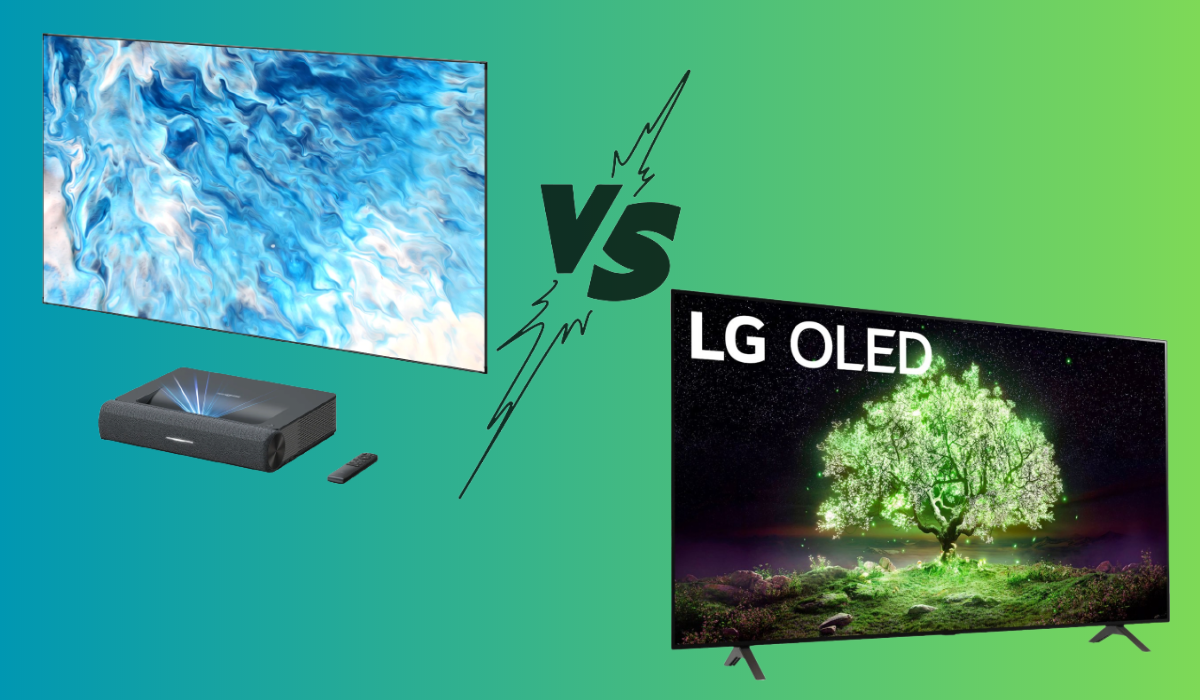
Budget
The primary factor to consider when choosing between a projector and an OLED is budget. Projectors are generally more expensive, but the cost of purchasing a projector can be offset by its ability to deliver large projections with high-quality visuals on a large surface area. On the other hand, OLEDs tend to be less expensive and require minimal installation costs. Depending on how much you are willing to invest in your television experience, one technology may be better suited than the other.
Location
Another key factor that comes into play when deciding between purchasing a projector or an OLED is location – where will it be placed? If you plan on keeping your television in one room for long periods, an OLED might make more sense as it requires no installation process. On the other hand, if you plan on moving your television around or need to set up a projection in a large space, then a projector may be the better choice.
Image Quality
When weighing your options between purchasing an OLED and a projector, you should consider image quality. Projectors can provide excellent visuals with high contrast and brightness levels. However, OLEDs now offer picture-perfect color accuracy and deep black levels that make for an incredible viewing experience. So, depending on what type of content you plan on watching, one technology might be preferable over the other.
Screen Size
The size of the screen is a key factor to consider. Projectors are great for viewing content on large surfaces, while OLEDs can be used to create an intimate viewing experience in smaller spaces. So, if you want a larger display then a projector would make more sense, but if you prefer something smaller and more contained then an OLED might be your best choice.
Resolution
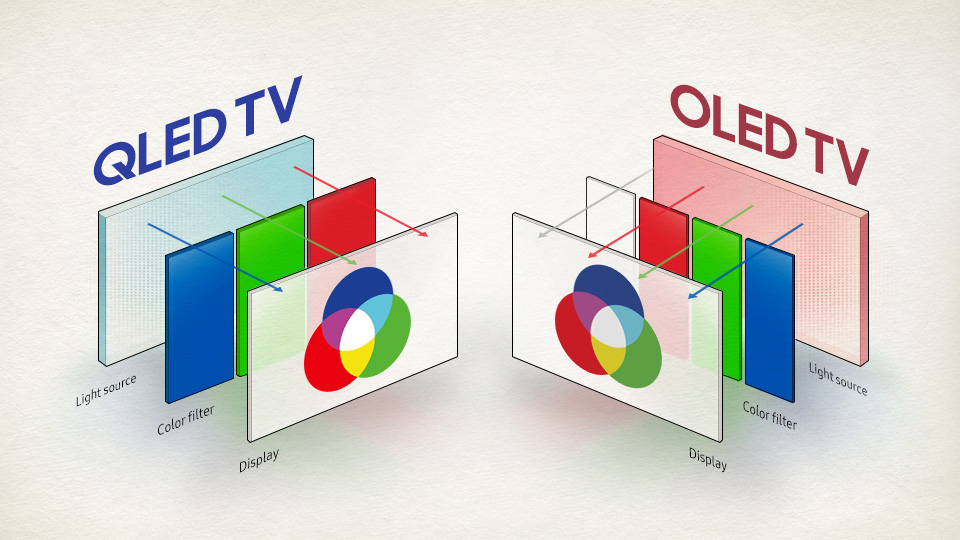
Finally, the resolution is an important factor to consider when selecting between a projector and an OLED. While projectors can deliver up to 4K resolution in some cases, OLEDs are capable of producing even higher resolutions, with 8K models now available on the market. So depending on how much detail you want your content to have, one technology might be better than the other.
How to maintain Projector and OLED TV?
1. Clean the screen regularly
To maintain your projector’s or OLED TV’s image quality, it is important to clean the screen regularly. Dust and dirt build up on the lens of the projector and can cause dust particles to show up in your picture. Use a microfiber cloth with water or special cleaning solutions designed for screens to gently wipe away any debris. It is also important to keep all of the ports, including HDMI, VGA, USB, and audio ports clear from dust and debris as well.
2. Inspect cables and connections
Make sure that all of your cables are securely plugged into their respective ports to ensure optimal image quality. Check both ends of each cable for damage such as frayed wires or cracks in the insulation. Replace any cables that may be damaged and double-check all connections to make sure that they are secure.
3. Update drivers and software
It is important to keep your projector or OLED TV’s drivers, firmware, and other software up-to-date for optimal performance. Check the manufacturer’s website for updates and download them when available. This will ensure that your equipment remains compatible with new technologies such as 4K resolution, HDR, etc., and will also help prevent any potential glitches while using your device.
4. Protect from overuse
Projectors and OLED TVs have a limited lifespan of approximately 10,000 to 50,000 hours depending on their usage conditions which means it is important to take breaks and turn them off when not in use. Overusing your projector or OLED TV can lead to heat buildup, which can cause the device to overheat and malfunction.
5. Stabilize the device
Make sure that your projector or OLED TV is on a stable surface and secure it with mounting accessories if necessary. This will prevent any damage due to accidental bumps or vibrations while in use. Additionally, make sure that the area around the device has adequate ventilation so that it does not overheat during prolonged use.
6. Protect from power surges
Power surges can cause significant damage to your projector or OLED TV and should be avoided at all costs. Use a surge protector with built-in voltage regulation or an uninterruptible power supply for added protection from power fluctuations.
7. Inspect the bulb
Regularly check the lamp of your projector or OLED TV for any changes in brightness or color saturation to ensure that it is functioning properly. Replace the bulb as soon as possible if you notice any significant changes in its performance, as this could indicate a cracked filament which can cause permanent damage to your device.
Follow these tips to ensure that your projector and OLED TV remain in top condition and enjoy crystal-clear images for years to come!
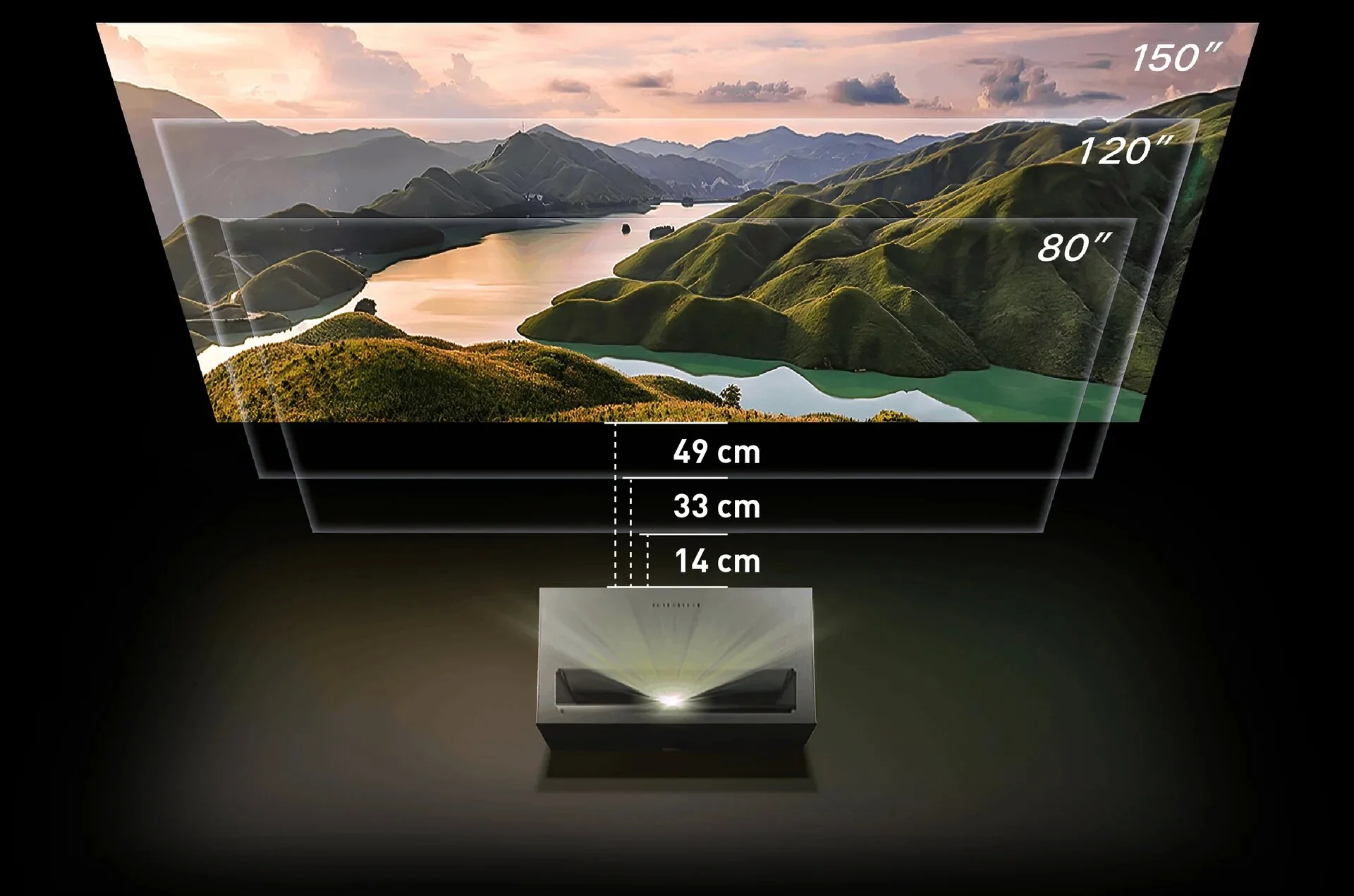
FAQ
Are OLEDs good for your eyes?
OLEDs are excellent for your eyes compared to LCD TVs. OLEDs emit less blue light than regular LCD screens, which reduces strain on your eyes over long periods of viewing. Additionally, OLEDs produce very deep blacks and can reach lower brightness levels. This helps reduce eye strain in dark rooms by reducing the amount of blinding backlight reflected off the screen when viewing the content in a dark environment.
Are there any downsides to using an OLED?
While OLEDs offer superior picture quality over traditional LCD TVs, they do have some drawbacks that should be taken into consideration before you make a purchase. First, since OLED technology is still relatively new, there is a high cost associated with purchasing an OLED TV as opposed to an LCD TV.
Additionally, OLED TVs are more prone to burn-in and image persistence, which can be difficult and expensive to fix. Lastly, some people may find that the rich colors produced by OLEDs can be too saturated or oversaturated for their liking. Ultimately, it is up to the individual consumer to decide if they are willing to overlook these drawbacks in exchange for superior picture quality.
What is the difference between an OLED and an LED screen?
The primary difference between OLED and LED screens is the technology used to produce the image. OLED (Organic Light Emitting Diode) uses organic compounds that emit light when an electrical current is applied, while LED (Light Emitting Diode) uses inorganic semiconductor materials that produce light when a voltage is applied. OLEDs offer superior picture quality compared to LEDs due to their ability to produce richer colors, deeper blacks, and greater viewing angles.
Additionally, OLEDs typically use less energy than LEDs, making them a more energy-efficient option. However, OLED displays are also more expensive than LED displays due to their higher manufacturing costs.
Can projectors be used for gaming?
Yes, projectors can be used for gaming. Projectors offer larger screen sizes than traditional displays and allow gamers to immerse themselves in their favorite games with a cinematic-like experience. Projectors also typically offer faster response times than television sets, reducing input lag which is important for competitive gaming.
Additionally, projectors are generally more affordable than LCD or OLED TVs when it comes to getting the same picture size. However, one potential downside of using projectors for gaming is that they tend to produce lower-quality pictures due to their lower resolutions and lack of HDR support.
Does the quality of a projector screen matter?
Yes, the quality of a projector screen does matter. A good-quality screen will be able to provide a better picture and can make colors appear more vibrant. Additionally, a good-quality screen will help reduce ambient light reflections when viewing in brighter rooms which can be distracting during games or movies. Ultimately, the type of projector screen you choose will depend on your budget and desired picture quality.
Generally speaking, higher-end screens tend to offer superior performance but also come with a higher price tag. However, if you are looking for an affordable solution but still want decent picture quality then lower-end screens can be an option as well.
Can you watch TV with a projector?
Yes, you can watch TV with a projector. Projectors offer larger screen sizes than traditional TVs and can provide an immersive viewing experience. Additionally, projectors typically have lower input lag compared to televisions which allow for smoother transitions when switching between channels or watching fast-paced content such as sports or action movies.
However, one potential downside of using a projector for TV is that some models may not support all types of video formats (e.g. 1080p). Additionally, if your projector does not support HDR then you will likely miss out on the enhanced colors and contrast offered by modern TVs.
Are there any projectors suitable for daytime use outdoors?
Yes, there are projectors suitable for daytime use outdoors. However, these projectors tend to be more expensive than their indoor counterparts due to the additional features they offer such as high lumens and higher contrast ratios that allow them to perform better in brighter environments.
Additionally, these projectors may also have auto-focus capabilities which help adjust the focus quickly and accurately when changing from day to night or vice versa. Ultimately, if you are looking for a projector suitable for outdoor use during the day then it is important to consider all of these features before making your purchase.
Is AMOLED technology a type of OLED?
Yes, AMOLED (Active Matrix Organic Light Emitting Diode) technology is a type of OLED (Organic Light Emitting Diode). Both technologies are based on the same basic principle of using organic materials to produce light when a voltage is applied. However, AMOLED displays offer significantly better performance than traditional OLEDs due to their active matrix design which allows them to have faster response times and higher refresh rates.
Additionally, AMOLED displays consume less power than traditional OLEDs, making them more energy-efficient. Ultimately, if you are looking for superior picture quality then an AMOLED display may be your best option.
Is OLED TV better than a projector?
It depends. OLED TVs offer superior picture quality compared to projectors due to their higher resolutions and support for HDR content. Additionally, they tend to have faster response times and lower input lag which is important when it comes to gaming. However, projectors still have some advantages over OLED TVs in terms of affordability and screen size as they can provide larger pictures at a more affordable price point.
Ultimately, the decision between an OLED TV or projector should come down to your budget and desired features. If you don’t need a large picture then an OLED TV may be the best option but if you are looking for maximum value then a projector may be the way to go.
Is it better to get a projector or TV?
It depends on your needs and budget. TVs offer better picture quality and faster response times, however, they tend to be more expensive than projectors. Additionally, TVs are limited in terms of screen size whereas projectors can provide larger pictures at a more affordable price point.
Ultimately, the decision between a projector or TV comes down to what features you need and how much you are willing to spend. If you don’t need a large picture then an OLED TV may be the best option but if you are looking for maximum value then a projector may be the way to go.
Is a short-throw projector better than an OLED?
It depends. Short-throw projectors offer the benefit of being able to provide a larger picture from a closer distance than traditional projectors, which can be beneficial in certain situations such as small rooms or restricted spaces. However, OLEDs offer superior picture quality and faster response times when compared to short-throw projectors; they also require less power consumption.
Useful Video: UST Laser Projector vs OLED TV – Which is better in a Dark room? | Size vs Brightness
Conclusion Paragraph
Projectors and OLED TVs both offer an immersive viewing experience. When it comes to deciding which one is better, the decision boils down to user preference and budget. Projectors are a great choice for larger rooms, as they can produce very large images up to 300 inches in size. They are also ideal for those who want 3D capabilities or a cinema-like experience in their home. However, projectors require more maintenance than OLED TVs and may require additional space for mounting and setup.
On the other hand, OLED TVs provide superior picture quality with deeper blacks and vibrant colors compared to traditional LCD/LED TVs at a much lower cost compared to projectors. They are slim and lightweight and require minimal setup requirements, making them an attractive choice for those on smaller budgets or who lack the space for a projector. Ultimately, whether you choose an OLED TV or a projector will depend on your own preferences and budget.
References
- https://www.computerhope.com/jargon/p/projecto.htm
- https://www.usnews.com/360-reviews/technology/tvs/what-is-oled
- https://thewiredshopper.com/projector-vs-oled-tv/

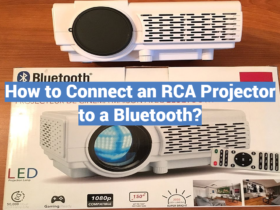
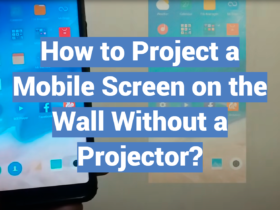


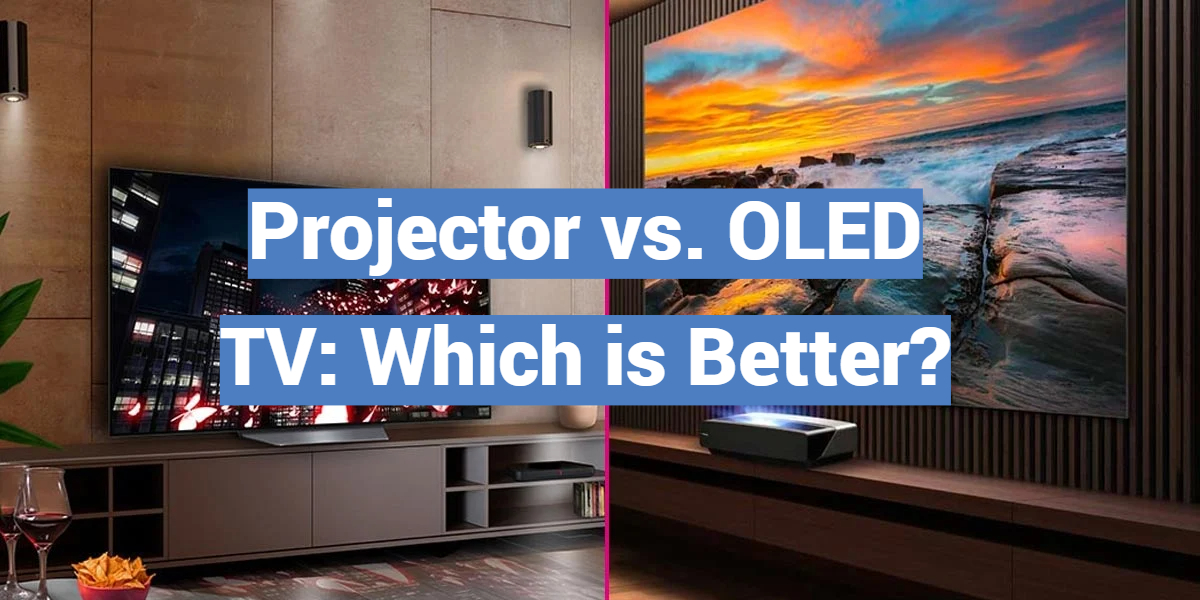
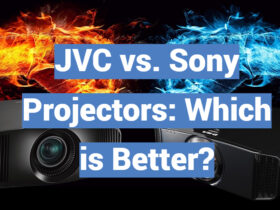
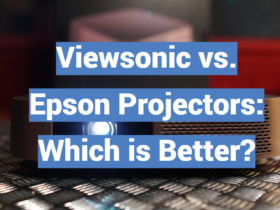
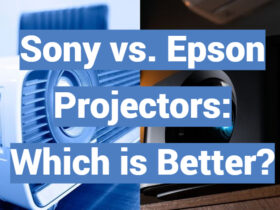
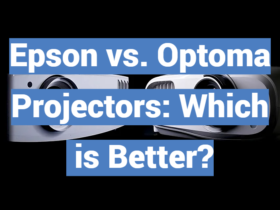
Leave a Review